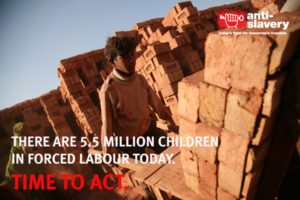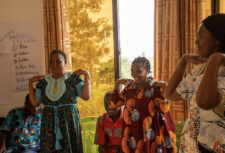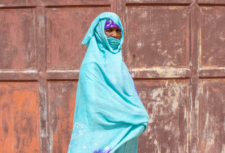Disclaimer: This article is more than 8 years old, and may not include the most up-to-date information or statistics. Please verify information with more recent sources as needed, and if you have any questions contact our Press Office.
12 June 2015
Child labour has decreased in recent years but no such luck with child slavery. Time to act.
By Dr Aidan McQuade, Director

Today is World Day Against Child Labour. A good day to reflect on what is being done to tackle it and recognise some succeses, but also recognise a complete failure in tackling child slavery.
By the ILO’s recent estimate, child labour has reduced by 78 million since 2000. A one third decline overall which encompasses a 50% reduction in children in hazardous work is an enormous achievement.
But in parallel with this there is a much darker statistic. The ILO 2012 estimate that there are around 5.5 million children in forced labour and that this figure has not varied significantly since 2005.
I do not think that we do anyone any favours, least of all the children who find themselves in slavery across the globe, by not recognising this figure as anything other than a stark failure. Plainly whatever is being done right to address child labour, including its most hazardous forms, it is not enough to address child slavery.
26% of all forced labourers are children, the majority found in Asia and the Pacific, and Africa, but every country and region of the world is affected by child slavery, including the UK.
To consider what must be done to address this most egregious form of child exploitation let us first begin by being clear about what we are talking about.
The 1956 Supplementary Convention on Slavery defines child servitude as the handing over of a child with a view to exploitation.
It is important to be clear on this point. When we are talking about child labour that however hazardous is that labour, it tends to be undertaken when the child is still in the care of their parents, and the parents generally have the best interests of the child at heart, even if they may be profoundly mistaken as to what those best interests are.
Nevertheless when engaging in the struggle to end child labour there is that potential commonality of purpose with parents who will often be open to new ideas about how to do better by their children.
No such potential exists when we are discussing the issue of child slavery.
Consider children who have been handed over from their parents for things such as trafficking for forced labour or sexual exploitation, or forced child labour by a 3rd party, or conscription in armed conflicts, or trafficked as child domestic workers.
While these represent diverse practices in a variety of different socio-economic contexts they all have one thing in common: in not one of them, nor any other child slavery situation, do the adults doing the exploiting of the children care one iota for the best interests of the child.
So in addition to the efforts being undertaken by governments, trade unions, businesses and non-governmental organisations on child labour a new set of initiatives are necessary to begin to tackle child slavery properly and systematically.
There are a number of elements to a credible programme against child slavery.
First, a credible global programme against child slavery must include education ensuring that school is affordable, accessible and a safe environment, particularly for girls, and that the education is appropriate. But it is not enough to presume that the expansion of universal education even on these terms will be enough to protect children who are vulnerable to slavery.
Very often those who are most vulnerable do not obtain education because they come from a discriminated against group, such as Dalits and other minorities in South Asia. Hence a credible global response to child slavery must mean the adoption of measures that will advance rule of law by preventing bigoted public officials from arbitrarily excluding any section of citizenry from their rights as citizens.
A credible global programme against child slavery must include also elements relating to law enforcement and child protection so that cops in the countries most affected by child slavery can identify children who are in slavery, understand their responsibilities towards them, and know the best methods and partners with whom to work to remove children from slavery.
One of the saddest failures in the struggle against child slavery, and indeed all slavery in the world today, is that the development and humanitarian communities are largely absent. It seems that they are hoping that the programmes they undertake, blind to non-gender based forms of discrimination, will be sufficient to remove the causes of slavery in general and child slavery in particular.
They won’t be. So it is necessary that child slavery eradication must be recognized as a fundamental development goal and included in the post 2015 agenda as such.
Governments also need to consider the roles that trade and diplomatic policy can play: will the community of nations continue to be happy to build commercial links with countries such as Qatar and the Gulf states or Uzbekistan, which formulate much of their economic and other policies on being able with impunity to enslave children and other vulnerable workers.
Finally we must have a serious consideration of the relationship between child slavery and child marriage. Work undertaken by Anti-Slavery International, Girls Not Brides and others have shown that child marriage can be slavery of the most distressing kind, as children are in essence traded with the thinnest of veils of respectability for sexual exploitation. That hypocrisy should no longer be tolerated and child marriage treated as unacceptable as any other form of child sexual exploitation.
The struggle against child labour should give us hope that we can advance also the struggle against child slavery. But in order to do so we must attack child slavery directly and not merely hope that it might somehow go away.
If the world fails to do this then the figure of 5.5 million children enslaved will continue to indict our failure.





